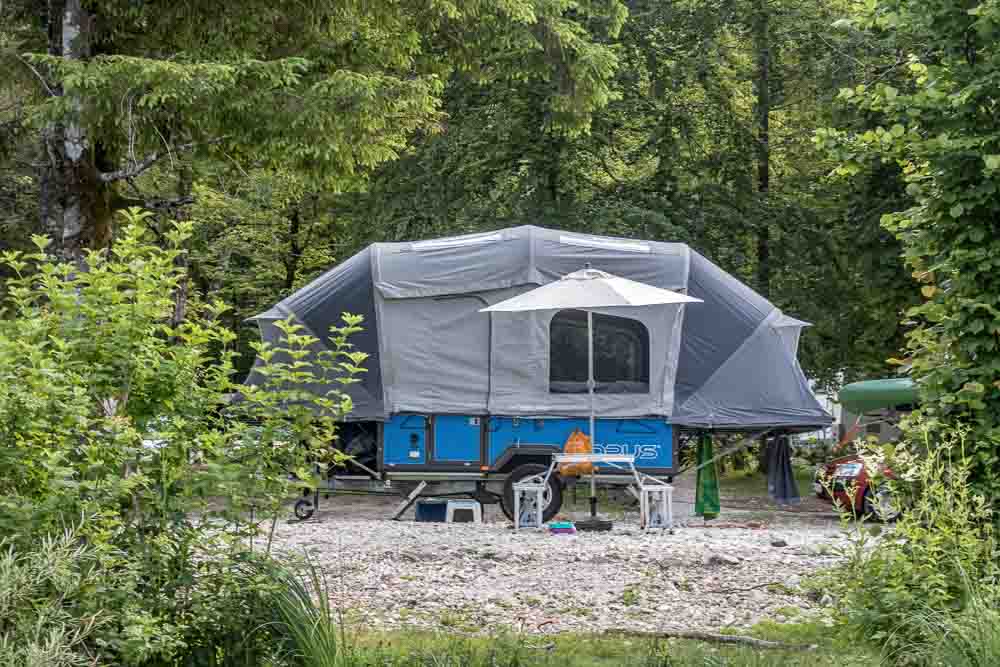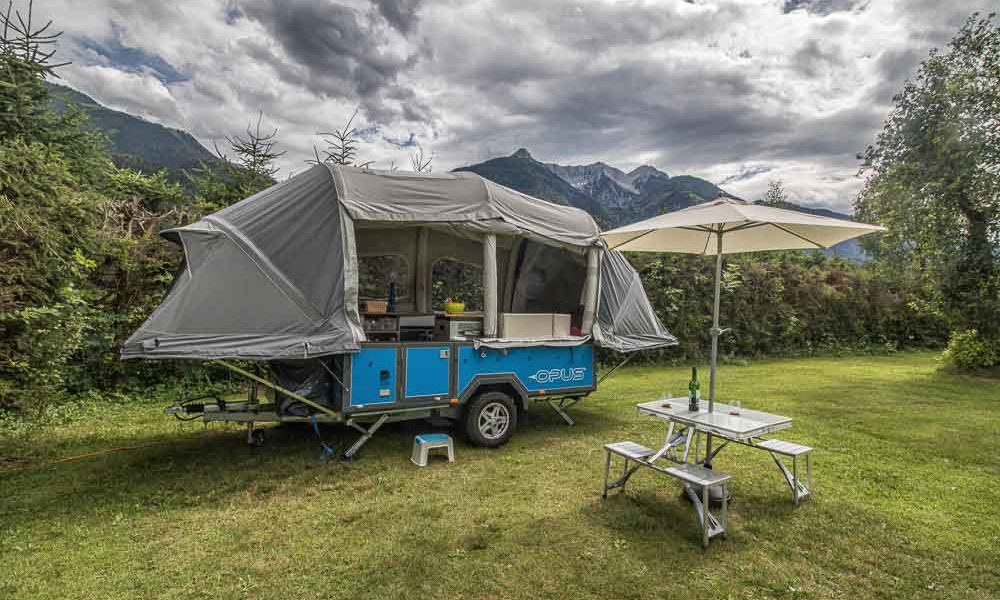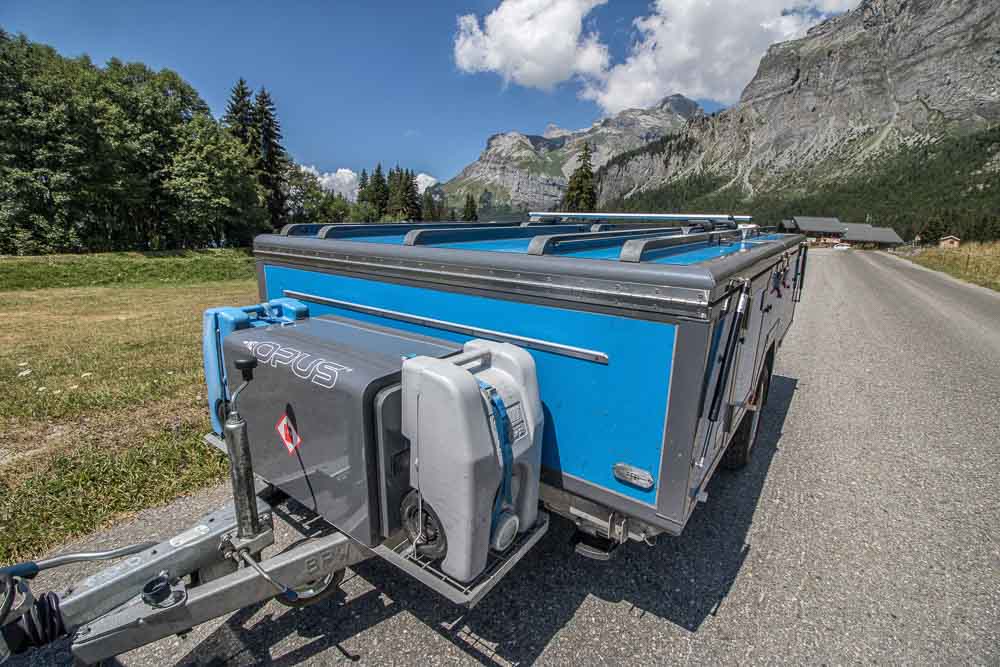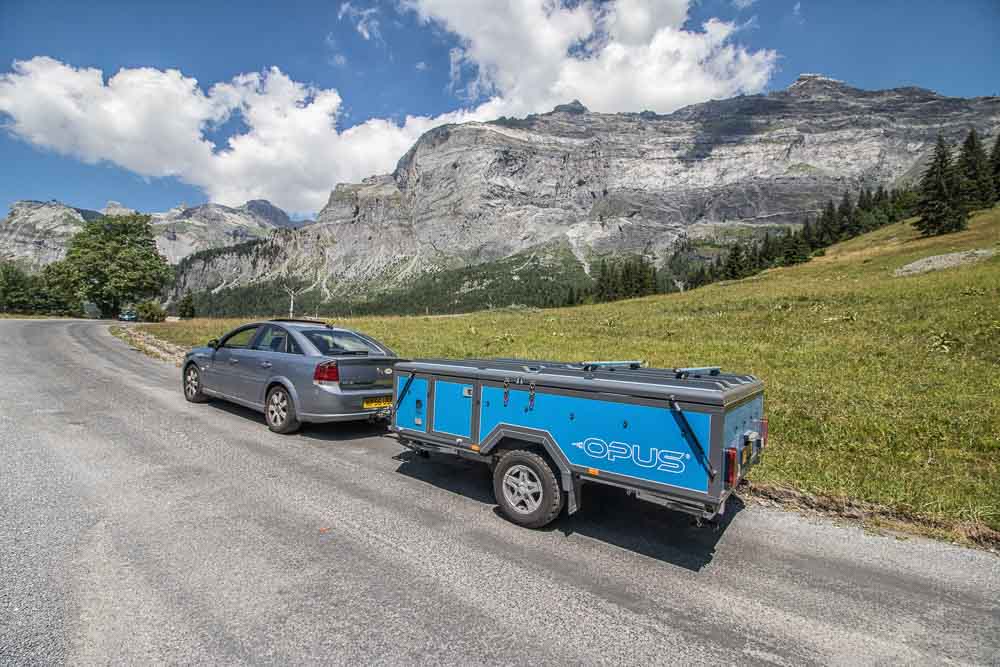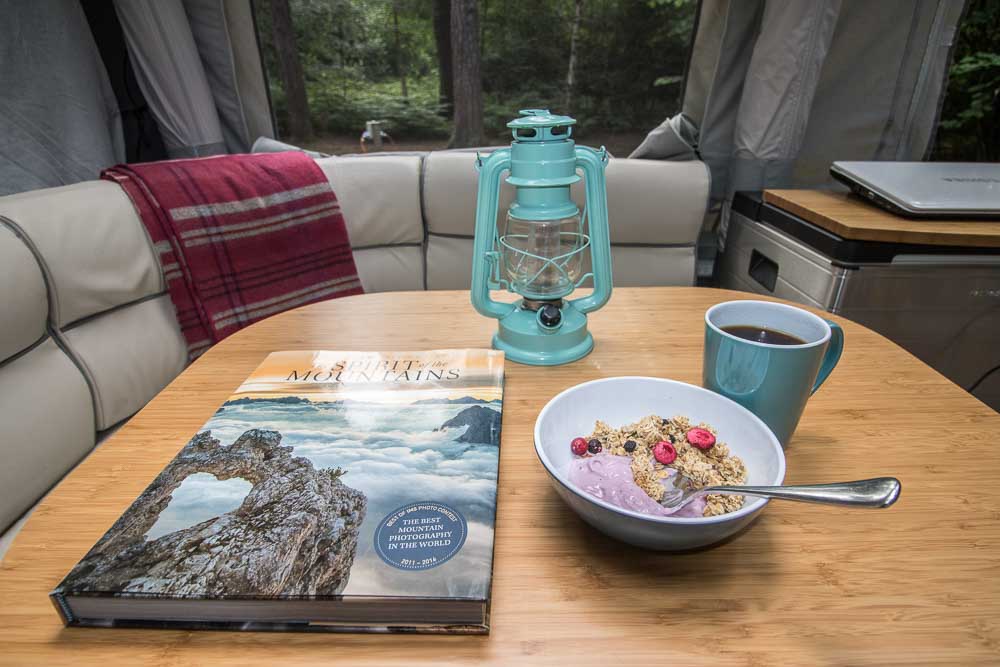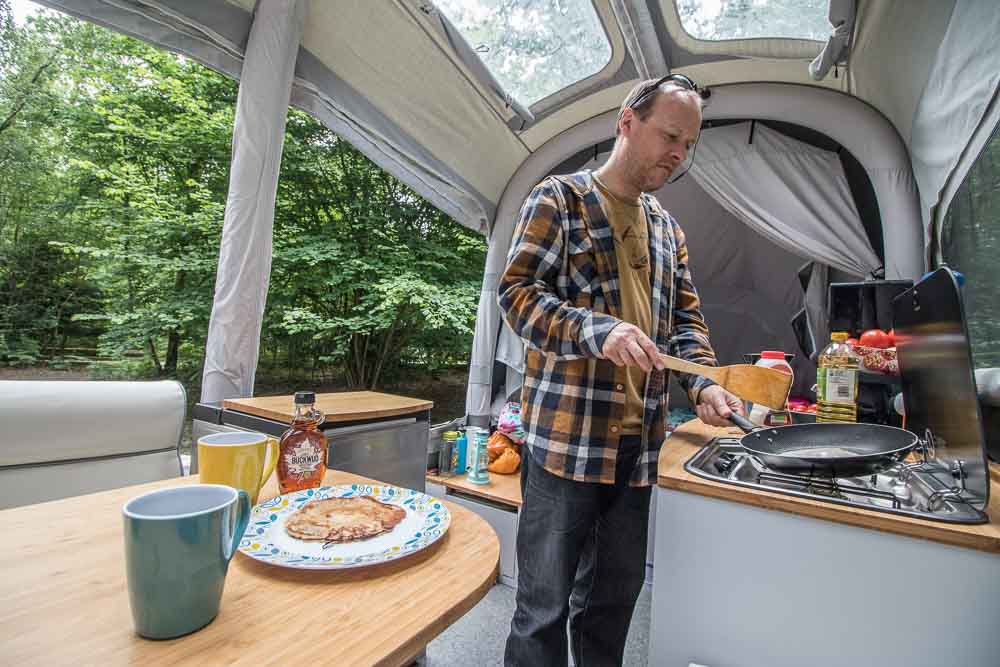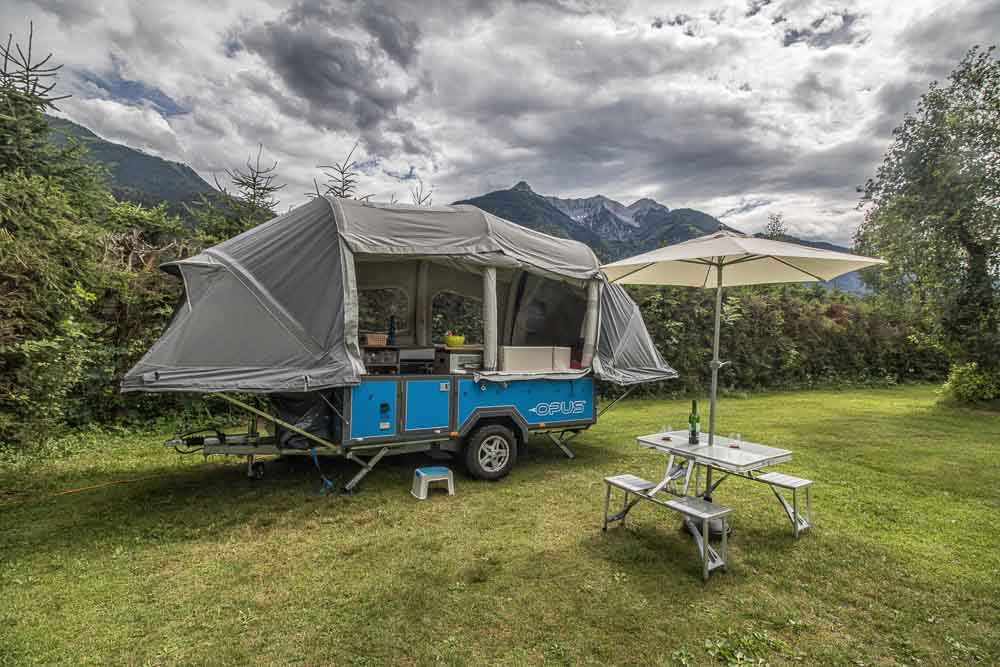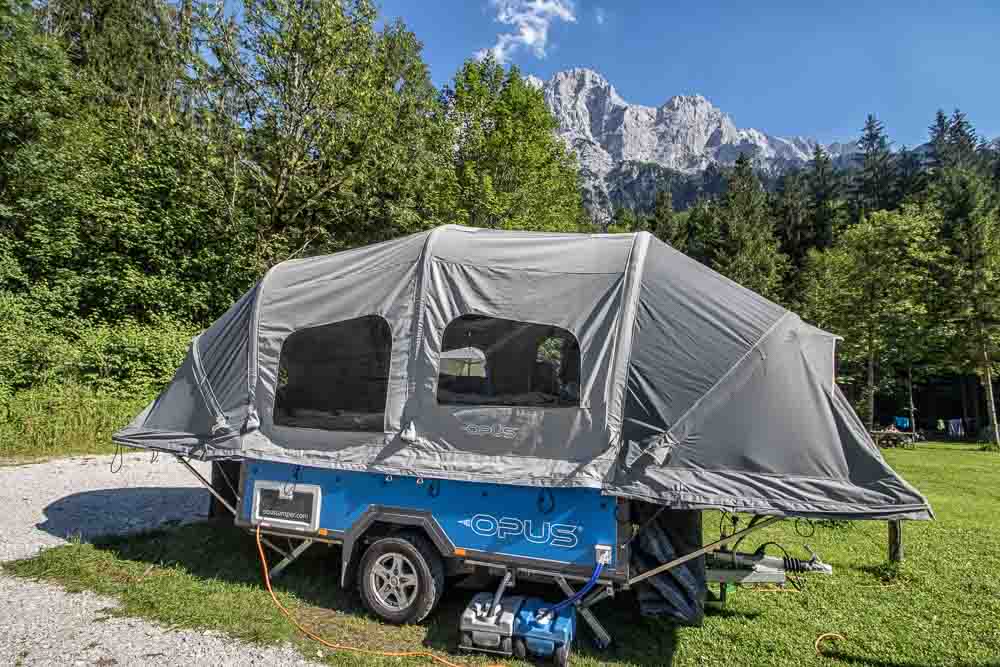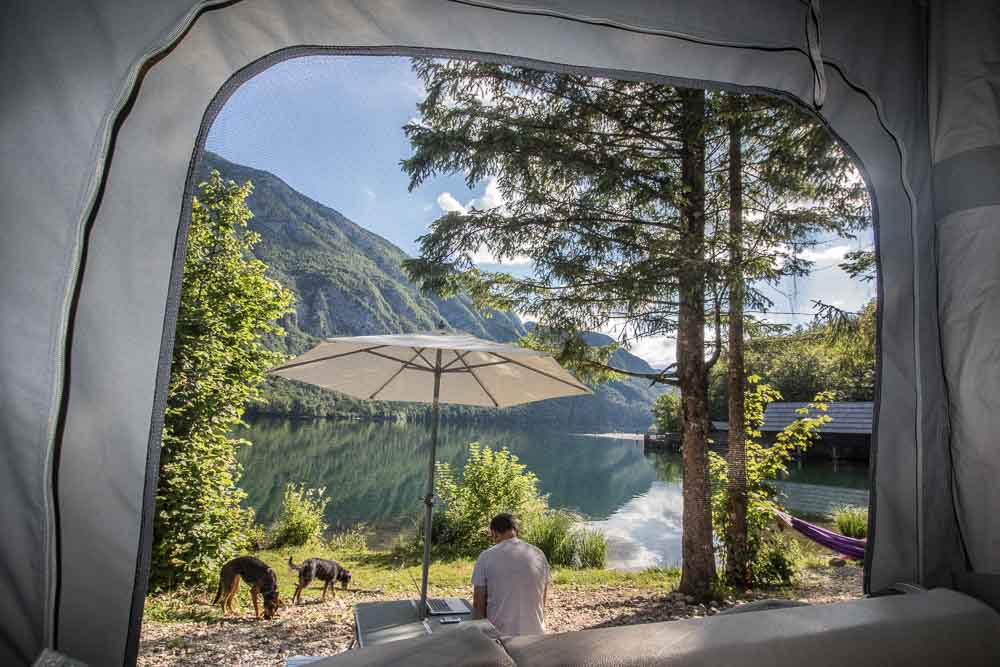We test out a modern take on the trailer tent concept during a roadtrip around the Alps...
The Air Opus camper stands out from the crowd, so much so that we’d often return from our day’s outing to find people taking photos! It’s not surprising; the rugged-looking trailer comes in a variety of bright colours, and opens out to cleverly reveal a large canvas tent that houses two double beds, a kitchen, sofa, and table.
The trailer packs down to 430cm long by 201cm wide making it much easier to tow than a caravan, without losing any of the amenities. It weighs just 800kg and can be towed with a regular vehicle, and with any UK driving license. In order to test the Opus properly, Trek & Mountain took to the road, travelling around Europe and living in the Air Opus for six weeks.
GETTING STARTED
Being first-time ‘caravan-ers’, we opted for a quick demo of how to hitch, unhitch, and erect the tent. This was so simple that a 10-minute lesson was enough and we were on our way. After unhitching, and lowering the stabilising feet, it was time to open out the tent. The two panels that form the roof of the trailer when packed up, fold out creating platforms for each of the beds, with the mattresses already in place (we kept some of the bedding in place too, stowing only the pillows to pack it up). You have to secure these panels before putting any weight on the beds. Two struts on each side hold it up. The pins that keep these in place can be a bit fiddly and is perhaps the only part of setting up that can be a bit tricky at times. We stayed in sites with electricity hook-ups, but the onboard battery charges as you drive and can be used when electricity isn’t available.
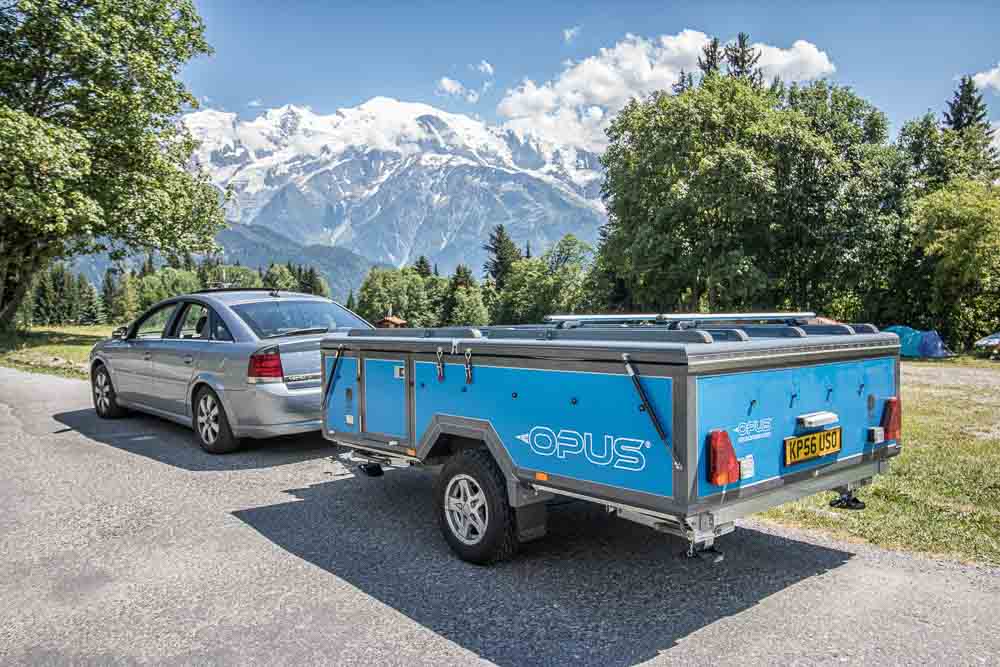
Now the easy part. The Air Opus (an upgrade of the original Opus) uses air beams to inflate the tent – so a simple push of a button was all it took, and we could sit and relax for a few minutes while the Opus did all the work. There was a bit of assembly inside but by the end of the first week, we were setting it up in about 10 or 15 minutes from start to finish. Each air beam has valves where they connect to each other through hoses. These need to be opened when inflating so that the air can move freely. We chose to tighten these after inflating to make sure that no air seeped out, though it wasn’t entirely necessary. The valves also mean that if there’s any type of failure with a valve or the beam itself, you can isolate the problem and the tent won’t collapse.
Though it may sound complicated, it’s not. While the trailer has some systems in place for lighting and the assisted breaking (which makes towing safer and easier), not having an engine to worry about was something that we at T&M found to be a real bonus over choosing a motorhome – that, and being able to unhook and use the car to nip into town, head off to the climbing crag etc. – though we can appreciate that some people prefer to have no set-up and simply park up.
HITTING THE ROAD
Our first stop was Bolzano in the Dolomites. It was scorching hot, but luckily Opus have included plenty of ventilation. Each of the five large windows (three in the seating area and one at each end) are constructed of three layers – the canvas opens to reveal a clear layer (that lets sun in but keep rain out). Or you can open both layers, leaving just a screen. The ceiling also has some panels that you can open to let even more light in. When we really wanted to open it up, we would unzip and roll up the entire front panel of the tent which made it feel like you were sitting outside. During our second night in Bolzano, a fierce storm moved in. The heavy-duty polycotton canvas kept us dry, but also softened the sound of the rain – much nicer than the tinny sound of rain on metal. I should also note that when we headed off to colder parts of Europe, the built-in heater and heavy canvas kept us very warm.
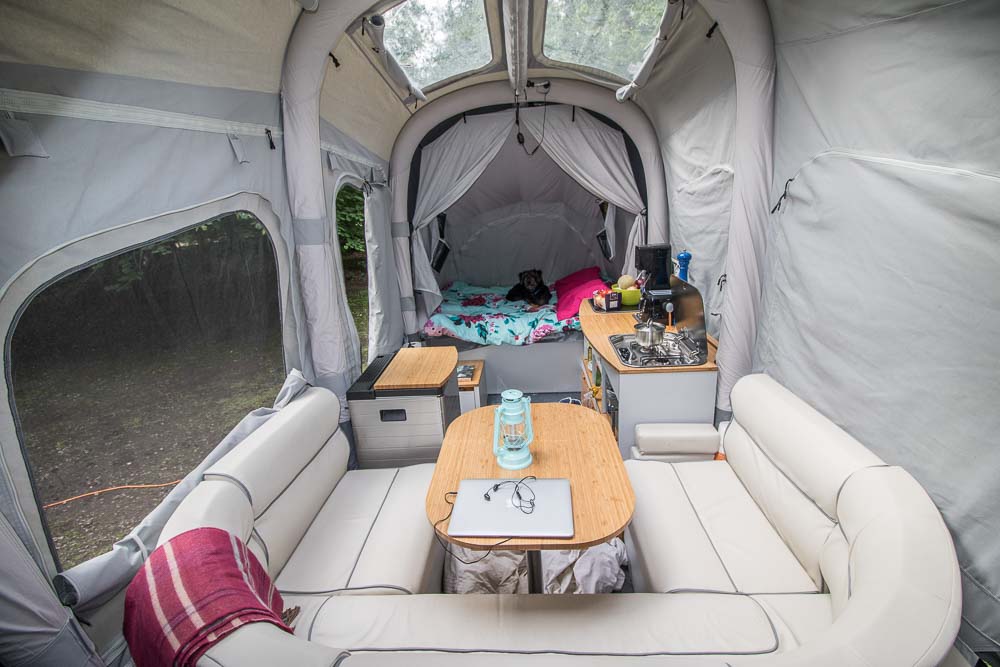
The inside space was well laid out. In fact, we never felt cramped during the entire six weeks. The tall ceilings and many windows, as well as light colour palette, gave it a very spacious feel. The kitchen was well-equipped with a small fridge, a sink with running water, a two-hob gas stove, a microwave, and some storage areas for keeping food, dishes etc. The built-in storage under the sofa meant that we could bring a couple of extra appliances too, such as a toaster. The sofa was comfortable and was a great place to sit and work, or eat dinner. The table can be taken down (which we sometimes did when we weren’t using it, just to create some more space inside) and the cushions rearranged to make a third bed, though having six people sleeping inside for anything more than a couple of nights might be pushing it. The beds were comfortable and the inner tents around the beds meant that we could zip off the area for privacy. The small portable toilet stashed in a storage compartment is a great addition when travelling with children, but we found ourselves using the campsite facilities more often than not. LED lighting strips lit the entire camper and no extra light was necessary. These lights could also be dimmed which was a nice touch. There are optional extras such as a ‘home’ theatre (seriously!), or an awning that provides additional living space.
We had our fair share of rain on the trip, and while the tent never leaked (nor did the trailer when packed up), there was still a bit of dampness that made its way inside during the wettest periods as would be expected – just enough to make sugar clump or slightly crinkle pages of a book. This only made us consider how we stored a couple of things – a canister for the sugar and a dry bag for our books! A small consideration really. We were lucky not to have to pack it up when wet, and it always dried out quickly once the sun came out. While the bottom metal part of the door locks, somebody could make their way inside by unzipping the top part of the door if they really wanted to. We felt pretty secure in most places we stayed, but there were a couple of times that we locked our valuables in the car while away. If I had to add something to my wish list when it comes to the Air Opus, I suppose it would be a built in step into the trailer (although you can buy a metal step from Opus), and if I’m really going to nitpick, perhaps some additional access to the storage under the sofa – being able to access it from the sides rather than having to rearrange the cushions each time.
VERDICT
While Opus may not convert those living the #vanlife who want to remain inconspicuously parked up in front of the crag (the Opus will get noticed!), or those who only ever venture into the backcountry, the sporty look of the Opus will certainly attract many outdoors-loving folks, looking to combine a bit of comfort with their outdoor endeavors. This comfort comes with a price though, as they start at about 16k. However, we think the Opus will last for years to come, with no need to upgrade when you upgrade your vehicle – so actually in the long run offers excellent value-for-money compared to, say, a campervan or motorhome.
